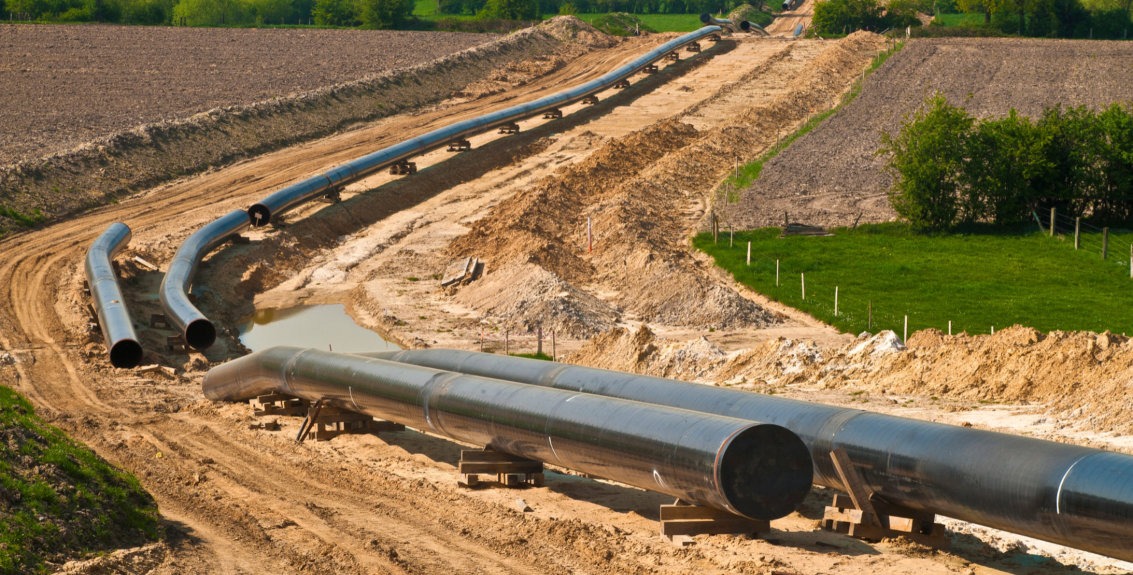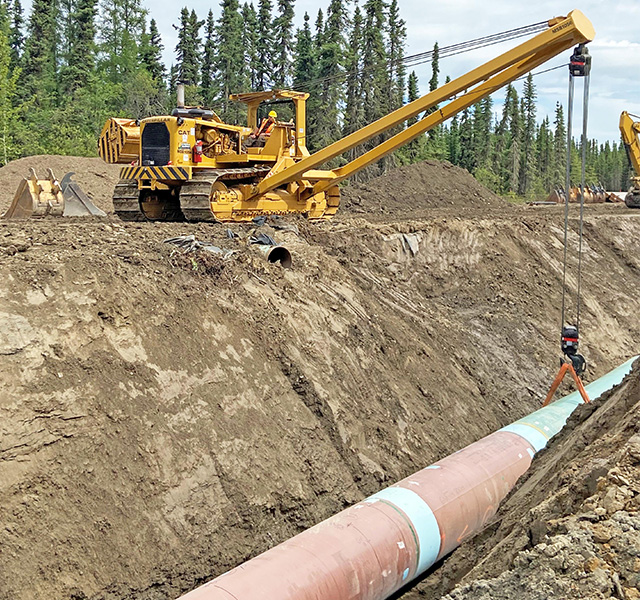Designing a Pipeline System? Here's Why Creek Pipe Texas oilfield Is Your Best Resource
Recognizing the Basics of Pipes Installation: What You Required to Understand About the Process
Appropriate pipe installation is necessary for any plumbing system. It calls for cautious consideration of different aspects, including product option and adherence to regional guidelines. A well-planned design can avoid problems like pressure loss, while the right tools ensure efficient signing up with strategies. However, even experienced installers can make usual errors. Comprehending these fundamentals can result in a more efficient and durable system, motivating a more detailed consider the vital components included in the procedure.
Picking the Right Products for Pipe Installation
When thinking about pipe installation, the choice of ideal materials is necessary to making sure durability and performance. Various products are readily available, each offering special advantages and considerations. PVC pipes are lightweight, immune to rust, and cost-effective, making them suitable for domestic pipes. Alternatively, copper pipes, known for their durability and capacity to stand up to high temperatures, are commonly preferred for heating systems.Additionally, galvanized steel pipelines offer toughness and resilience, ideal for heavy-duty applications, although they are at risk to rust over time.For underground installments, polyethylene pipelines are favored due to their adaptability and resistance to stress and anxiety splitting. Appropriate material selection depends upon the details requirements of the task, including stress ratings, temperature level variations, and the chemical nature of the liquids being delivered - Creek Pipe Texas oilfield. Ultimately, educated choices pertaining to pipe products add greatly to the general success and durability of plumbing systems
Understanding Local Building Ordinance and Laws
Exactly how can understanding local building ordinance and guidelines impact pipe installation? Experience with these codes is necessary for ensuring that pipe installations are safe, certified, and reliable. Neighborhood building regulations outline specific demands relating to materials, installation techniques, and safety measures, which should be stuck to in order to avoid potential lawful problems and costly fines.Failure to abide can bring about assessments being stopped working, delays in project completion, or also mandated elimination of poorly set up pipelines. In enhancement, recognizing zoning regulations and laws can affect the sort of materials allowed, as well as the approaches utilized for installation.Contractors and home owners alike need to spend time in examining regional policies before commencing any type of installation project. This proactive method not just advertises security yet likewise enhances the general quality and longevity of the plumbing system, inevitably fostering long-lasting capability and contentment.
Planning Your Pipe Design and Layout
Proper preparation of pipe layout and design is essential for accomplishing an efficient pipes system. This procedure begins with evaluating the particular needs of the area, thinking about the location of components and appliances. Precise dimensions assure that pipes are correctly directed, decreasing bends and transforms that can lead to press loss.Consideration of the circulation prices and the kinds of products made use of is important, as various products have differing sturdiness and compatibility with pipes systems. In addition, the developer should account for future expansions or adjustments to the design, enabling for versatility in instance of renovations.Efficient water drainage and air flow are additionally substantial parts of the layout, as they protect against clogs and guarantee proper waste removal. Finally, collaboration with local building codes guarantees conformity and security, which is extremely important in any kind of plumbing installation project.
Essential Devices and Equipment for Installation
Successful pipe installation hinges on having the right devices and equipment handy. Crucial devices include pipe cutters for tidy cuts, wrenches for tightening up fittings, and pliers for clutching and turning pipelines. Furthermore, a level warranties pipelines are set up uniformly, while a gauging tape help in attaining specific lengths.For details products, a soldering iron might be necessary for copper pipelines, while a PVC cutter is necessary for plastic choices. Security tools, such as handwear covers and safety glasses, protects installers from possible risks throughout the process.A pipe bender can be specifically helpful for developing smooth curves without endangering integrity, while a torque wrench guarantees that links are safeguarded to the producer's specifications.Having these devices readily available not just helps with a smoother installation procedure but likewise adds to the overall durability and capability of the plumbing system. Appropriate tools is important in achieving long-lasting outcomes.
Methods for Proper Pipe Joining and Securing
Achieving a secure and leak-free link between pipes needs mindful focus to joining and sealing methods. Numerous methods exist, each fit to various pipe materials and applications (Creek Pipe Company). For instance, welding is typically weblink utilized for steel pipes, making certain robust connections with warmth combination. In contrast, plastic pipes gain from solvent cement or fusion welding, producing strong, long-term bonds.Threaded links are usual in both steel and plastic piping, calling for accurate placement and making use of ideal sealers, such as Teflon tape or pipe dope, to stop leakages. Compression installations provide one more choice, where mechanical pressure secures the pipes with each other, making them quickly dismantled for maintenance.Regardless of the technique picked, proper prep work is essential. This includes cleansing pipe ends and ensuring they are totally free from debris. Implementing these strategies carefully will enhance the longevity and integrity of the pipe system, eventually adding to its effective performance
Usual Errors to Avoid Throughout Installation
During pipe installation, avoiding typical errors is vital for making sure a trustworthy and effective system. One frequent mistake is failing to measure and cut pipelines properly, which can lead to incorrect fittings and leakages. In addition, ignoring to check the compatibility of materials can cause corrosion or various other damages over time. Improperly securing joints and connections can additionally create weak points in the system, creating possible failures.Another common error is neglecting the relevance of slope and water drainage; pipes must be mounted at the right angle to help with correct flow. Insufficient support for pipelines can cause sagging and anxiety, impacting the stability of the system. Eventually, disregarding local codes and laws can cause expensive rework and safety threats. By recognizing these mistakes, installers can substantially boost the sturdiness and efficiency of pipe systems.
Upkeep Tips for Resilient Pipe Systems
To assure the long life of pipe systems, normal assessments and cleaning are important methods. These measures aid recognize possible concerns prior to they rise into significant troubles. Additionally, using correct insulation techniques can even more shield pipes from temperature changes and ecological elements.
Routine Evaluations and Cleansing
Regular assessments and cleaning are essential for keeping the longevity and performance of pipe systems. Consistently taking a look at pipes for indicators of rust, leaks, or obstructions can help determine potential problems prior to they escalate right into expensive repair work. Cleansing pipelines regularly gets rid of build-up that can restrict flow and advertise damage. It is recommended to set up evaluations a minimum of annually, however extra regular checks may be needed in high-usage environments. Making use of expert solutions for detailed cleaning warranties that all debris is effectively cleared. Furthermore, keeping documents of evaluations and maintenance tasks aids in tracking the system's wellness in time - Creek Pipe Texas oilfield. By focusing on these techniques, property owners can improve the integrity and life-span of their pipe systems
Proper Insulation Methods
Reliable insulation strategies play a vital duty in maintaining the performance and longevity of pipe systems. Correct insulation lessens heat loss in warm water pipes and avoids freezing in cool water pipes, considerably reducing power expenses and prospective damage. Usual materials made use of for insulation include fiberglass, foam, and rubber, each offering varying levels of thermal resistance. It is vital to guarantee that insulation is applied consistently, covering all subjected locations without voids. In addition, protecting insulation with ideal bolts helps maintain its setting and performance with time. Normal evaluations must be conducted to recognize wear and tear, assuring prompt substitutes. By carrying out these methods, pipe systems can run efficiently and have an extensive life span, ultimately profiting both the atmosphere and the homeowner.

Regularly Asked Inquiries
Exactly how Do I Identify the Appropriate Pipe Size for My Task?
Identifying the suitable pop over to this site pipe dimension entails reviewing the project's flow repipe company needs, pressure specs, and the kind of fluid being delivered. Consulting style criteria and conducting estimations guarantees optimal efficiency and efficiency in the installation procedure.
What Are the Environmental Influences of Different Pipe Materials?

Can I Set Up Pipes Myself or Should I Employ an Expert?
The inquiry of whether to install pipes independently or hire a specialist often depends upon the individual's ability level and task intricacy. A professional might guarantee conformity with policies and reduce prospective lasting problems.

How Much Time Can I Expect My Pipe Installation to Last?
The durability of pipe installation varies considerably, typically lasting 20 to 100 years, relying on products, installation quality, and upkeep. Normal examinations and correct treatment can enhance longevity and protect against premature failures.

What Are the Signs of a Failing Pipe System?
Indicators of a stopping working pipe system consist of regular leakages, unusual water stress changes, blemished water, mold development, and consistent dampness. House owners ought to check these signs to avoid expensive damage and warranty timely repair work are made.